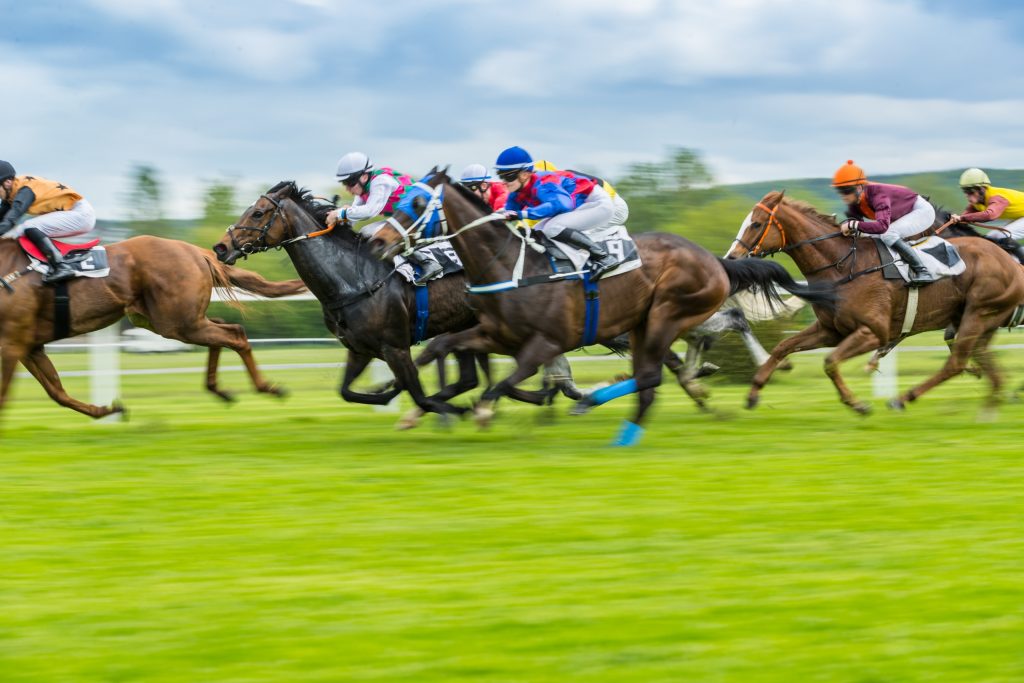
Betting on horse racing can be an exhilarating and potentially lucrative pastime. However, it’s easy to get caught up in the excitement and make impulsive decisions without considering the factors that can greatly impact the outcome of a race. To be a successful horse racing bettor, it is crucial to be able to spot the triggers that can significantly affect your chances of winning.
Horse racing is a sport that involves numerous variables and factors that can influence the performance of a horse. Identifying these triggers can give you a competitive edge and increase your chances of making accurate predictions. By being mindful of these key factors, you can make more informed decisions when placing your bets.
If you want to improve your accuracy and success rate in horse racing betting, it’s vital to develop the skill of spotting triggers that can have a significant impact on the outcome of a race. By employing these top five tips, you can enhance your ability to identify the factors that truly matter and make smarter bets in the world of horse racing.
What is Trigger Spotting or トリガミ?
Trigger spotting in horse racing betting or トリガミ is an advanced technique used by experienced bettors to identify potential race winners. By closely observing the behavior and physical condition of the horses before a race, bettors look for “triggers” or signs that indicate a horse is in top form and poised for a strong performance. These triggers can include physical signs such as a shiny coat and alert, focused demeanor, as well as behavioral indicators like a relaxed and confident attitude in the paddock. By effectively spotting these triggers, bettors can make more informed decisions when placing their bets, increasing their chances of success in horse racing betting.
Benefits of Trigger Spotting in Horse Racing Betting
Trigger spotting in horse racing betting can benefit the writer by providing valuable insights into potential winning horses based on historical performance data. By analyzing previous race performances, including finish positions and odds, bettors can identify patterns and trends that may indicate a horse’s likelihood of success in an upcoming race.
Furthermore, the new stats in Angler Analysis, such as average finish position and off odds, can significantly enhance the process of identifying winning horses, trainers, jockeys, and owners. For example, analyzing average finish positions can help bettors identify horses that consistently perform well, while off odds can indicate when a horse has been underestimated in the past, potentially offering better payouts for winning bets.
Overall, trigger spotting and utilizing Angler Analysis can provide bettors with a more informed and strategic approach to horse racing betting, increasing their chances of selecting winning horses and ultimately maximizing their potential for profitable outcomes.
Tip 1: Utilize Angler Analysis
Angler analysis is a crucial tool for understanding the preferences, behaviors, and buying patterns of the specific angler demographic. To effectively utilize angler analysis, it is essential to thoroughly research the angler demographic through various sources such as fishing industry reports, social media analytics, and market research surveys.
Start by reviewing fishing industry reports to gain insights into the overall trends and preferences within the angler community. This can provide valuable information on popular fishing locations, types of fish most commonly targeted, and preferred equipment and gear. Next, utilize social media analytics to understand the online behavior of anglers, such as the type of content they engage with, their preferred platforms, and influencer collaborations. Finally, gather data from market research surveys to gain in-depth insights into angler preferences, purchasing patterns, and factors influencing their buying decisions.
By thoroughly researching the specific angler demographic through these various sources, businesses can gain a comprehensive understanding of their target market and tailor their products, marketing strategies, and customer experiences to effectively meet the needs and preferences of anglers.
Tip 2: Utilize Betmix Angler
To utilize Betmix Angler to identify winning angles in specific race types, first navigate to the Factor Statistics section of BirdDog. Here, you can study factors such as distance, track condition, class, and more to create and evaluate winning angles based on specific conditions and advantages. Utilize the Angler tutorial to understand how to effectively use this tool to pinpoint the most profitable angles for different race types.
Pay close attention to the Signal Strength icon and Factor Group rankings to determine which race type to focus on. High signal strength indicates a strong correlation between a factor and the outcome of a race, while Factor Group rankings can help you prioritize which factors to consider for different race types.
By using Betmix Angler in conjunction with Factor Statistics and other tools in BirdDog, you can streamline your handicapping process and identify winning angles in specific race types, giving you a competitive edge in your betting strategy.
Tip 3: Pay Attention to Race Types and Racetracks in Different Jurisdictions
Race types and racetracks vary across different jurisdictions, impacting the safety and welfare of horses and jockeys. Different types of horse races include flat racing, steeplechase, and harness racing, each with its own set of rules and requirements outlined in the Racetrack Safety Program.
Flat racing takes place on a flat track, typically with a dirt, turf, or synthetic surface, while steeplechase involves jumping over obstacles on a turf track. Harness racing involves trotting or pacing while pulling a two-wheeled cart on a track. Each type of race requires specific safety protocols and regulations to ensure the well-being of horses and jockeys.
Racetracks also vary in characteristics such as surface conditions, track layout, and climate, all of which can impact safety. It is crucial to consider these factors when navigating different races and racetracks, and to adhere to safety protocols and regulations in each jurisdiction to ensure the safety of all involved.
Tip 4: Focus on Covered Horses and their Legs
There are various types of coverings for horse legs that can offer protection during activities such as trail riding or competition. Boots, wraps, and specialized socks are commonly used for different purposes and disciplines. Boots offer sturdy protection for the horse’s legs and can be suitable for competition events to protect against impact and potential injuries. Wraps provide support and compression, ideal for trail riding or long periods of standing. Specialized socks can offer added protection and support for specific areas of the leg during different activities.
Proper fit and material are crucial for horse leg coverings to prevent chafing and injury. It is important to ensure that the covering fits snugly but not too tight, and that the material is breathable and durable. Ensuring the proper fit and material can prevent rubbing, discomfort, and potential injury to the horse’s legs.
Tip 5: Keep an Eye on Female Horses
It is crucial to keep a close eye on the health and well-being of female horses, as they have their own unique health considerations. This includes regular monitoring for any signs of illness or injury, as well as ensuring they receive appropriate veterinary care when needed. Sudden deaths in the equine industry can have various causes, including underlying health issues or unforeseen accidents, so it’s important to stay aware of any reported instances and be prepared to take preventative measures. It is also essential to stay informed about attending veterinarians who provide care to the horses, as their expertise and prompt intervention can be critical in preserving the health and lives of the animals. By staying vigilant and proactive in health monitoring, industry awareness, and veterinary care, we can help ensure the well-being of female horses and minimize the risk of sudden deaths in the equine industry.

Conclusion
In conclusion, spotting triggers in horse racing betting is an important skill to have if you want to take your bets to the next level. From looking for patterns in past races and form guides, to understanding the differences between jockeys and trainers, there are many tips and tricks that can help you identify useful triggers for successful wagers. Take some time to understand these tips and use them when placing your bets. With practice and patience, you will be able to spot triggers in horse racing betting more accurately and increase your success rate.

 온라인 도박 사기를 효과적으로 처리하는 방법
온라인 도박 사기를 효과적으로 처리하는 방법  걱정 없는 도박을 위한 최고의 사기 없는 온라인 카지노
걱정 없는 도박을 위한 최고의 사기 없는 온라인 카지노  카지노 사이트: 재미와 행운이 기다리는 곳
카지노 사이트: 재미와 행운이 기다리는 곳  Gambling in the United States
Gambling in the United States  Gambling In Macau
Gambling In Macau  Slot Free 100 For New Members: Best Games To Play And Maximize Your Winnings
Slot Free 100 For New Members: Best Games To Play And Maximize Your Winnings  스포츠 베팅 마니아들에게 사기 검증이 중요한 이유
스포츠 베팅 마니아들에게 사기 검증이 중요한 이유